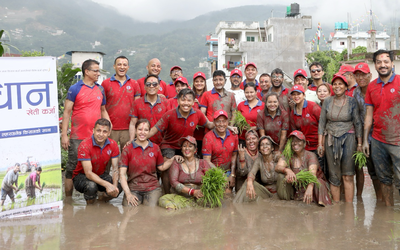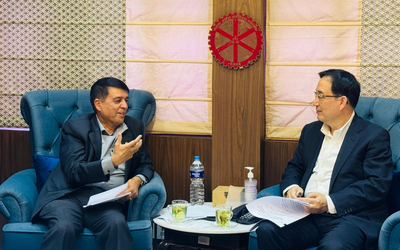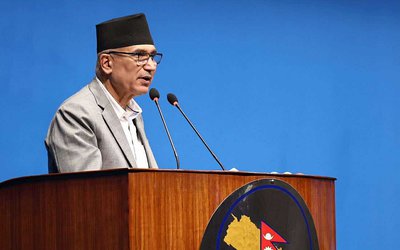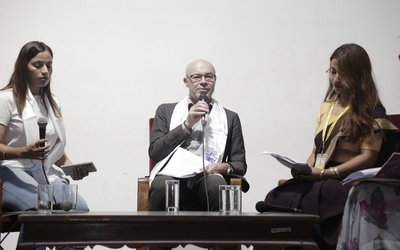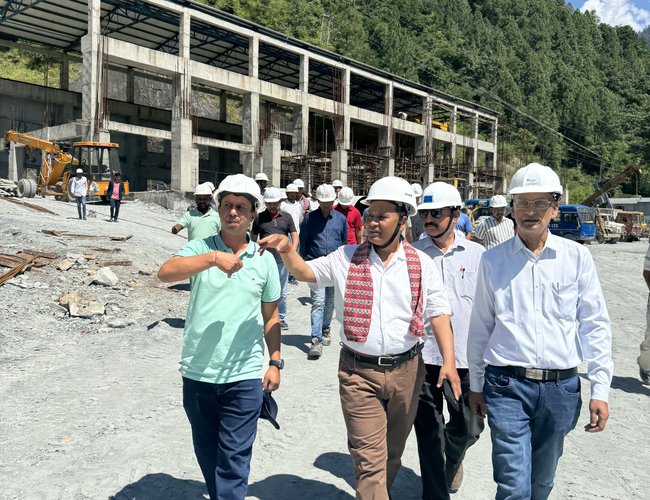
As the hydropower trade between Nepal and India reaches unprecedented levels with the export of electricity from Nepal, MD Kul Man Ghising has redirected his efforts towards the completion of the Rahughat hydropower project. This project is currently under construction with a concessional loan from the Exim Bank of India and is expected to be finalized within the last ten months of his tenure.
Having played a pivotal role in the development of Nepal's 19 MW Trishuli Hydropower Project, the largest project at the time in 1963, and the 11 MW Devighat Cascade Project in the 1980s, the successful completion of the 40 MW Rahughat Hydropower Project will mark another significant achievement in the partnership and cooperation between Nepal and India in the hydropower domain.
The project, which has faced delays spanning several decades, has now become a symbol of national pride. Recognizing its significance, MD Ghising, a figure renowned for his decisive action and dedication, has prioritized the advancement of this initiative. He appears fully prepared to allocate whatever time is necessary to ensure its success.
MD Ghising's connection to the project is also personal; he assumed the role of project manager in 2014 when it was nearly on the brink of failure. Due to unsatisfactory performance from the contractors, MD Ghising made the decisive move to terminate the contract with the construction firm and subsequently redesigned the project, enhancing its capacity from 32 MW to 40 MW.

Despite encountering numerous challenges, the project has made significant strides. On September 19, an official holiday, MD Ghising made the journey to the project site, located 300 kilometers west of Kathmandu, to expedite the construction efforts.
Since the commencement of his first term, Managing Director Ghising has utilized official holidays to conduct inspections of various projects, providing guidance and essential support to project managers in order to address challenges. Throughout the final stages of construction, MD Ghising made regular visits to the 456 MW Upper Tamakoshi Project.
Construction Status
The 40 MW Rahughat Hydropower Project, which is being developed by Raghuganga Hydropower Ltd, a subsidiary of the Nepal Electricity Authority, has reached an 80 percent completion rate. The overall progress of the construction stands at 80 percent.
This project, located in the Raghuganga Rural Municipality of Myagdi District, is expected to be completed by the following June, with financial assistance in the form of a concessional loan from the EXIM Bank of India to the Government of Nepal.
The concrete lining of the 6.2 km tunnel is currently progressing rapidly. Due to challenging geological conditions, the entire tunnel requires complete concrete lining. To date, one kilometer of the main tunnel has been successfully lined with concrete. Additionally, of the 1050 meters of the main tunnel designated to channel water to the powerhouse, a 130 mm pressure pipe has been installed.
Upon the completion of the primary civil structures of the power plant, the installation of turbines, generators, and other electromechanical equipment will commence. The facility will feature two units, each with a capacity of 20/20 MW for electricity generation.
The civil construction of the dam site has been finalized, and the necessary equipment, including the dam gate, has been delivered to the project location. Currently, approximately 30 percent of the sand thickening pond (decenter) construction has been accomplished. Work on the headworks, which had been halted due to inclement weather, is set to resume shortly.

MD Ghisingh, who also serves as the Chairman of the Raghuganga Hydropower Ltd. Managing Committee, conducted a site inspection and engaged with the project management team, consultants, and contractors involved in the construction process.
MD Ghisingh emphasized the need for a coordinated schedule to address the various challenges faced by the project, aiming for completion by June of the following year. Despite the challenges posed by the difficult geographical conditions, the Covid-19 pandemic, and seismic events, the project has made significant progress towards completion through persistent efforts.
"Given the ongoing interest from all stakeholders in the project's completion, we must exert our final efforts to ensure its conclusion within the current fiscal year and expedite the work. We will provide the necessary resources to facilitate this," stated Managing Director Ghising. "We should finalize the construction timeline within a week to ensure completion by June, with all parties signing off to proceed accordingly. As the concrete lining work presents a challenge, it is advisable to accelerate construction by increasing the workforce."
Due to the project's immobility from the site specified in the approved Initial Environmental Assessment (IEE) report, it became necessary to relocate stones because of a shortage of sand and gravel. An interim order was issued by the single bench of the then Chief Justice of the Supreme Court, Cholendra Shamsher Rana, on 29 Asar 2078, prohibiting any diversion of the river's natural course until a final decision was reached regarding the writ, as the Kaligandaki river holds significant religious, historical, and ecological value.
Raghuganga Hydropower Limited (RGHPL) was founded in March 2017 with the aim of generating 40 MW of electricity in the Gandaki Province of Myagdi District, Nepal. The project is wholly owned by the Nepal Electricity Authority (NEA). Funding for this initiative has been secured through a soft loan from the EXIM Bank of India.
The plant is expected to produce an annual energy output of approximately 247.89 GWh, with 137.71 GWh classified as firm energy in a year with 90% reliability. It has the capacity to generate peak power during the dry season for a duration of six hours at its maximum installed capacity. The project will yield around 247.9 million units of electricity each year, which can be dispatched for four hours each day.

Electricity generated by the Raghuganga Hydroelectric Project will be transmitted via a 0.6 km long 220 kV double circuit transmission line, linking the RGHEP Power House switchyard to the Dana Kushma line as part of the Dana Kushma 220 kV Transmission Line Project.
Upon completion of the project by June of the following year, it will represent a significant achievement in Nepal-India collaboration and partnership within the hydropower sector. The recent site visit by MD Ghising and the issuance of directives are noteworthy developments in this context.
- The Situation Pushes Women Journalists To Speak Louder, Experts Emphasize
- Jun 30, 2025
- SPI NEPAL: Prosperity Through Clean Energy
- Jun 30, 2025
- PM Oli Meets Spanish Prime Minister
- Jun 30, 2025
- FM Dr. Rana Said Nepal recognises constitutional guarantees to citizens' right to food
- Jun 30, 2025
- Weather Forecast: Generally Cloudy With Heavy Rainfall Is Likely In One Or Two Places Of Kathamandu, Biratnagar And Pokhara
- Jun 30, 2025
